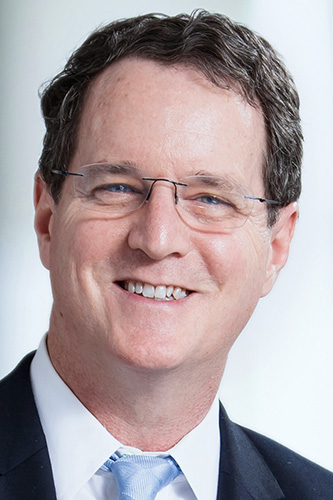

IPv4 Markets |
Sponsored by |

|

 The IETF held its 115th meeting in London in November 2022. This was another in the set of hybrid meetings with specific support for online attendees in addition to the normal face-to-face meetings for the week. In no particular order, here are a few of my impressions from the IETF meeting.
The IETF held its 115th meeting in London in November 2022. This was another in the set of hybrid meetings with specific support for online attendees in addition to the normal face-to-face meetings for the week. In no particular order, here are a few of my impressions from the IETF meeting.
Last Saturday marked the 53rd anniversary of the Internet. While the vast majority of its five billion users have been online for less than a decade, the Internet was taken into use on October 29th, 1969, when two computers connected to the ARPANET exchanged a message. Although the Internet has been around for a while, it remained below most people's radar until the late 1990s when the dot com boom started.
 The recent launch of a new internet exchange point in Saint Martin has propelled the territory towards a better, faster and more resilient Internet. The French Caribbean territory's new IXP, called Smart-IX, was launched in October under the auspices of a recently launched CaribIX project, which is coordinated by the Caribbean Telecommunications Union (CTU), supported by the Caribbean Network Operators Group (CaribNOG), funded by the INTERREG Caraïbes programme...
The recent launch of a new internet exchange point in Saint Martin has propelled the territory towards a better, faster and more resilient Internet. The French Caribbean territory's new IXP, called Smart-IX, was launched in October under the auspices of a recently launched CaribIX project, which is coordinated by the Caribbean Telecommunications Union (CTU), supported by the Caribbean Network Operators Group (CaribNOG), funded by the INTERREG Caraïbes programme...
 From time to time, a party can get out of control. Raucous celebration can become careless, even destructive. Combine a critical number of young people, a certain amount of beer and lots of music and damage often happens. Partygoers leave a mess behind them. The same thing happens to some IP addresses. Malicious actors use IP addresses properly registered to someone else.
From time to time, a party can get out of control. Raucous celebration can become careless, even destructive. Combine a critical number of young people, a certain amount of beer and lots of music and damage often happens. Partygoers leave a mess behind them. The same thing happens to some IP addresses. Malicious actors use IP addresses properly registered to someone else.
 The last few years have shown us how the Internet shrinks distances between distributed teams, organizations and families. This poses a challenge for some organizations. Many business relationships and contractual agreements involving the Internet have geographical implications and restrictions. This matters to anyone operating a network. It is most important for networks that get new address space.
The last few years have shown us how the Internet shrinks distances between distributed teams, organizations and families. This poses a challenge for some organizations. Many business relationships and contractual agreements involving the Internet have geographical implications and restrictions. This matters to anyone operating a network. It is most important for networks that get new address space.
 All devices that connect to the internet need unique addresses. The number of IP addresses is limited, creating a demand for addresses worldwide, particularly from the cloud computing industry. This demand has raised the value of IPv4 to levels that the internet's original developers didn't predict, in part because the internet was considered an experiment at the time. Of course, use - and so demand -- has exceeded anyone's realistic expectations.
All devices that connect to the internet need unique addresses. The number of IP addresses is limited, creating a demand for addresses worldwide, particularly from the cloud computing industry. This demand has raised the value of IPv4 to levels that the internet's original developers didn't predict, in part because the internet was considered an experiment at the time. Of course, use - and so demand -- has exceeded anyone's realistic expectations.
 A network can fence its own IP addresses or block specific external ones from access. Administrators frequently block access to their own IP addresses to bar unwanted access to content. Individual IPs or blocks of IPs may also be blocked due to unwanted or malicious behavior. IP address blocking prevents a specific IP address or group of IP addresses from connecting with a server, computer, or application.
A network can fence its own IP addresses or block specific external ones from access. Administrators frequently block access to their own IP addresses to bar unwanted access to content. Individual IPs or blocks of IPs may also be blocked due to unwanted or malicious behavior. IP address blocking prevents a specific IP address or group of IP addresses from connecting with a server, computer, or application.
 CIDR (Classless Inter-Domain Routing) is a routing system in which network engineers can distribute IP addresses based on the size of their specific network. This is more efficient than the previous system, which assigned IP addresses depending on whether the size of a network fits into one of only three sizes: Class A, Class B, and Class C.
CIDR (Classless Inter-Domain Routing) is a routing system in which network engineers can distribute IP addresses based on the size of their specific network. This is more efficient than the previous system, which assigned IP addresses depending on whether the size of a network fits into one of only three sizes: Class A, Class B, and Class C.
 Recent Department of Defense IPv4 activity and announcements about IPv6 indicate a shift in their perspective and suggest potential impacts on the IPv4 address market. The shift could include the release of up to 175 million IPv4 addresses in the coming years, creating a risk of a glut in the market. For perspective, the market has transferred 380 million addresses over eleven years.
Recent Department of Defense IPv4 activity and announcements about IPv6 indicate a shift in their perspective and suggest potential impacts on the IPv4 address market. The shift could include the release of up to 175 million IPv4 addresses in the coming years, creating a risk of a glut in the market. For perspective, the market has transferred 380 million addresses over eleven years.
 The early stages of internet development operated in a culture of independence from outside influence. In fact, as though to commemorate the spirit of the times, in 1996, John Perry Barlow wrote "A Declaration of the Independence of Cyberspace." In it, he told governments they "have no sovereignty where we gather." He went on to state, "Ours is a world that is both everywhere and nowhere, but it is not where bodies live."
The early stages of internet development operated in a culture of independence from outside influence. In fact, as though to commemorate the spirit of the times, in 1996, John Perry Barlow wrote "A Declaration of the Independence of Cyberspace." In it, he told governments they "have no sovereignty where we gather." He went on to state, "Ours is a world that is both everywhere and nowhere, but it is not where bodies live."